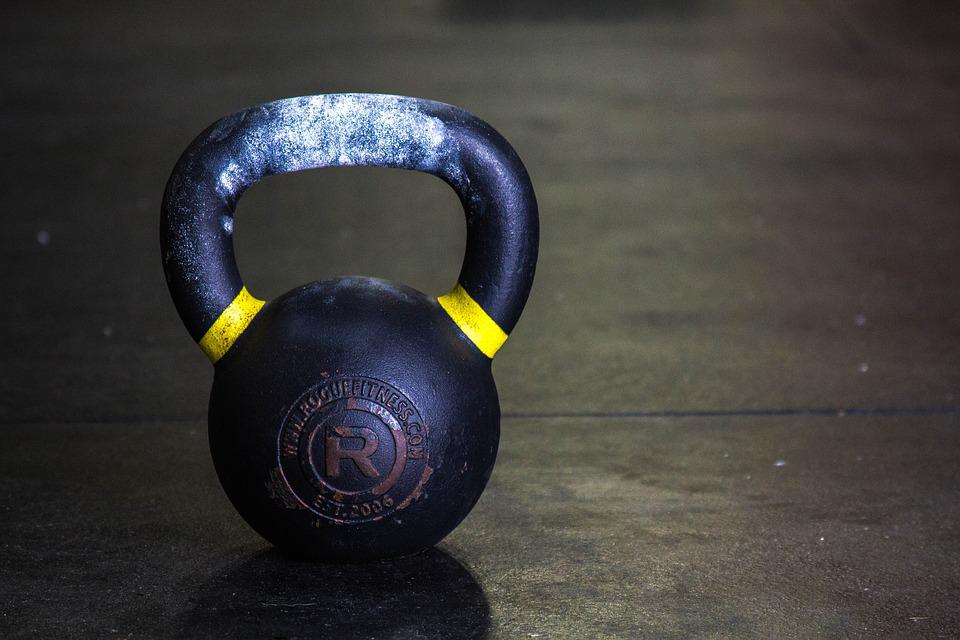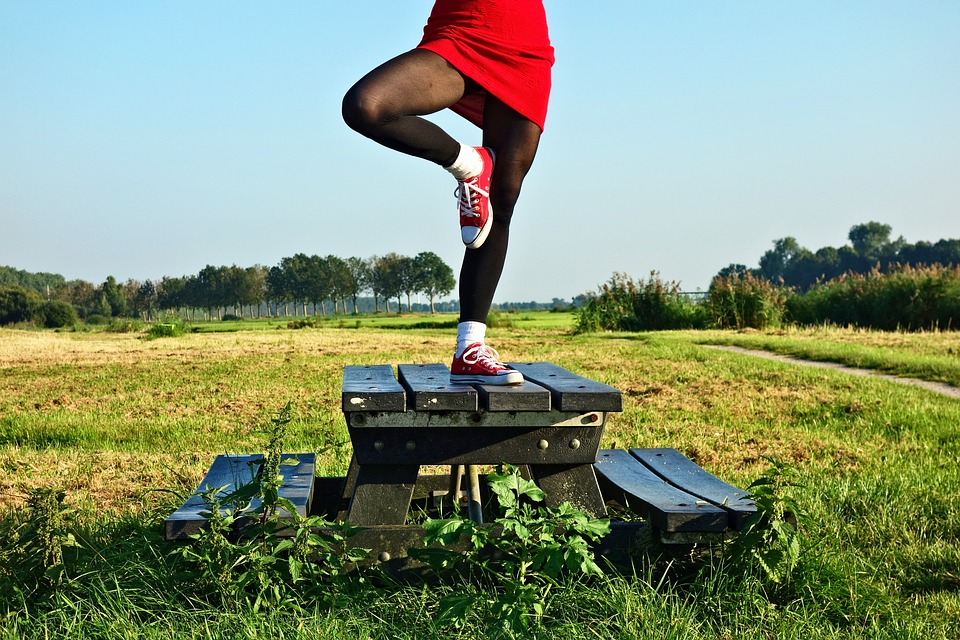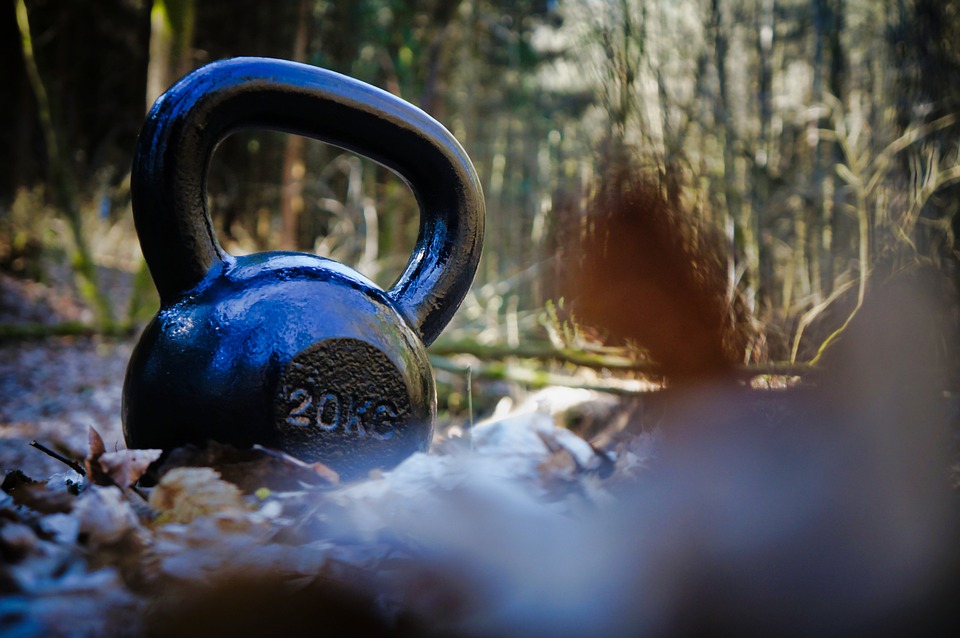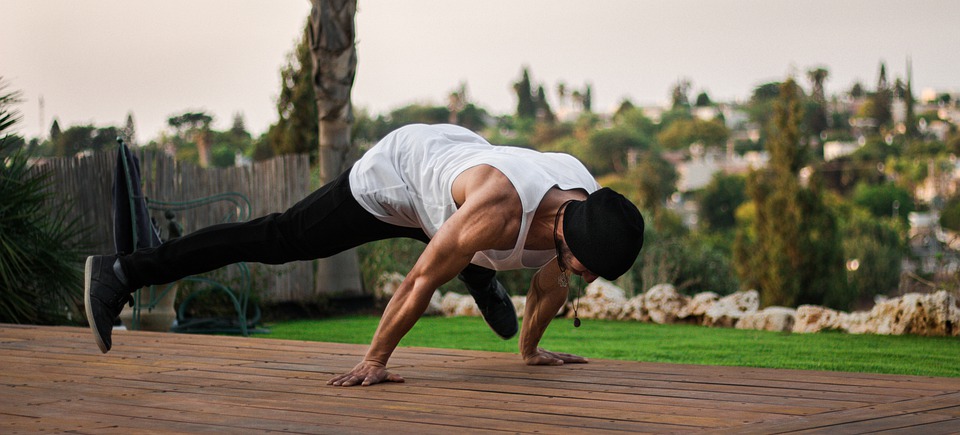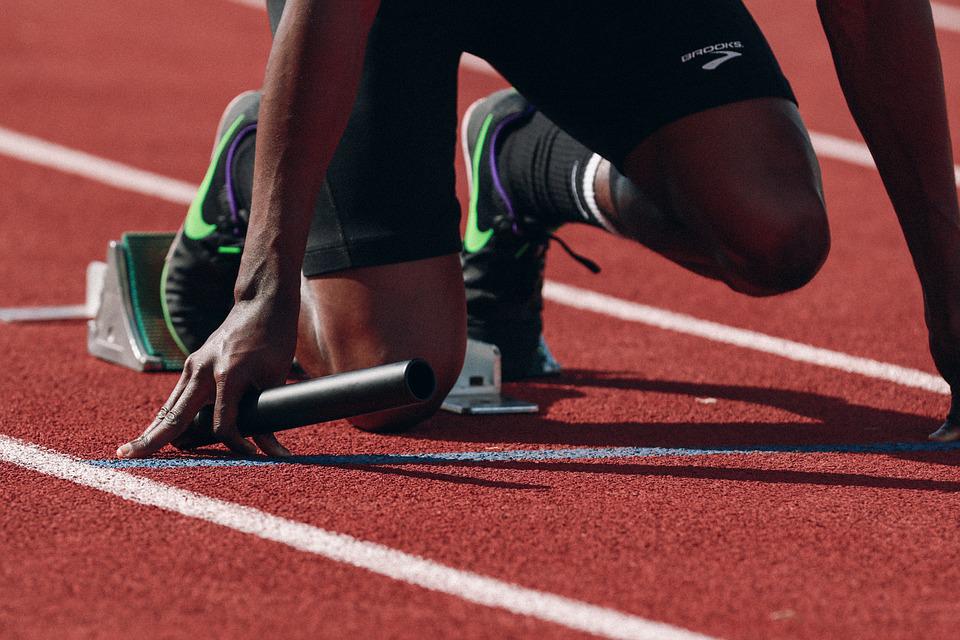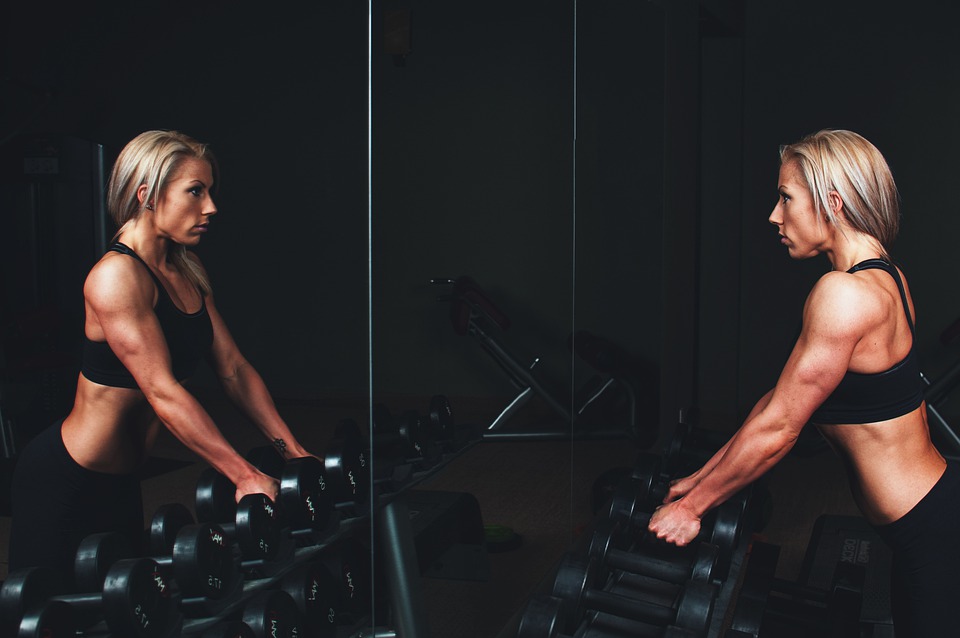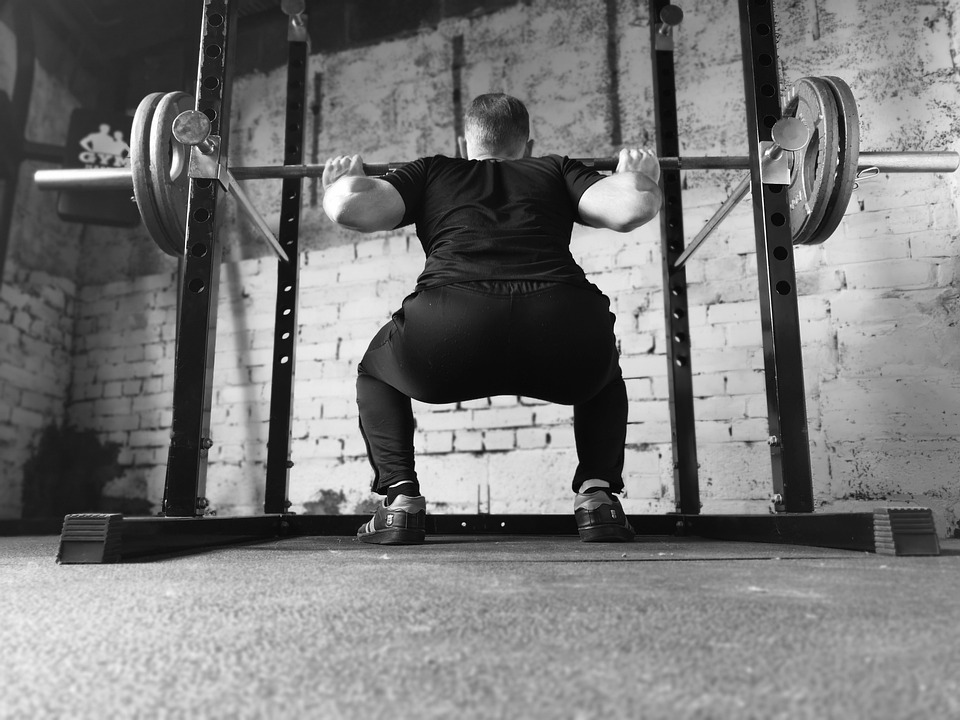
If you only work on squats and deadlifts to build bigger, stronger legs, you may not be getting the most out of your efforts. Adding high-quality leg accessory exercises can help you build more muscle, improve knee and hip stability, and reduce strength and muscle imbalances.
The dumbbell walking lunge is a fantastic lower body exercise that works to improve quadriceps, hamstrings, glute strength, and hypertrophy. This exercise is also great for increasing balance and coordination, and for helping your body to learn the correct movement patterns for everyday activities like running, sprinting, walking, and climbing steps. If you’re looking to build leg muscle and strength, improve your athletic performance, or prevention injury, the dumbbell lunge is a great choice!
How to Do a Dumbbell Lunge
If you don’t know where to start, ask a trainer or another experienced weightlifter. You will need an area wide enough to take one big step. Choose dumbbells of a weight that will enable you to complete the number of sets you have chosen. If you don’t know where to start, ask a trainer or another experienced weightlifter for help.
If you’re new to exercise, start with a lightweight.
Stand up straight, holding a dumbbell in each hand. Let your arms hang freely at your sides, with your palms facing your thighs. Your feet should be shoulder-width apart, or a little less.
- Inhale and take a big step forward with your right leg, landing on the heel.
- Bend at the knee until the right thigh approaches parallel to the ground. The left leg is bent at the knee and balanced on the toes while in the lunge position.
- Step the right foot back on an exhale to return to the starting position.
- Repeat the motion with the left leg.
Other Variations of the Dumbbell Lunge
No Weights for Beginners
Do the stepping lunge without weights first to make sure you have good form, especially if you have balance issues. Once you can do it correctly with just your body weight, add some light weights. You can gradually increase the weight as you get better at the exercise.
Longer Steps
This is mainly a quadriceps exercise, but taking longer steps will also work the gluteus maximus.
While taking longer strides, remain upright with your torso and keep your abdominal muscles engaged.
Reverse Lunge
The reverse lunge is an effective way to target your hamstrings and glutes, especially if you take a bigger step back. This forces your hamstrings and glutes to eccentrically contract to control the lowering phase and concentrically assist in the upwards phase.
The posterior chain refers to the muscles along the back of the body. This movement slightly differs from the forward lunge in that it puts more intense pressure on these muscles.
Forward Lunge
To perform a forward lunge, you take a small step forward, lowering your body via your quadriceps muscles. You then need to concentrically contract those same muscles to bring your body back to an upright position.
In the reverse variation, the loading is slightly greater on the quadriceps than in the regular variation. However, taking bigger steps will increase the involvement of your posterior chain.
Front-Foot Elevated Reverse Lunge
This variation of the lunge targets your hamstrings and glutes more than the reverse lunge because your front foot is elevated on a box or bench, allowing you to move through a greater range of motion.
This creates a more vertical back and torso angle. This movement is similar to the pattern of a back squat. This can help increase muscle growth and improve squat strength.
Weight Placement Changes
The lunge can also be performed holding dumbbells at the front of your shoulders, or with a barbell on your shoulders behind your neck. However, these are more advanced versions and you should only attempt them if you have no balance issues.
Dumbbell Walking Lunge
This is a variation of the lunge where you don’t return to a standing position, but instead continue moving forward by bringing the rear leg up and into another lunge.
Dumbbell Lunge With Biceps Curl
To work your biceps even more while in the lunge position, curl the dumbbells up while you’re holding the position. To do this, step forward into a lunge and curl the weights up. Lower the weights and return to standing.
Dumbbell Lunge Alternatives
There are two main types of dumbbell lunge alternatives- the split squat and the Bulgarian split squat. If you cannot do dumbbell lunges, split squats and Bulgarian split squats are good alternatives that offer many of the same benefits. You can customize these exercises to meet your current goals and needs.
Bulgarian Split Squat
The Bulgarian split squat is very similar to the dumbbell lunge. The main difference is that the Bulgarian split squat puts nearly all the weight on one leg. This exercise is beneficial because it works many of the same muscles as the dumbbell lunge.
This exercise is tough on your lower body, working your quads and glutes. You place your back leg on a bench and put all the weight on your lead leg.
Step Up
Step-ups are a unilateral exercise that primarily target the quads and glutes. With step-ups, you can manipulate the height to train partial and full ranges of knee flexion, which you cannot do with lunges.
This could be a good move for lifters who want to focus on concentric strength and who may also suffer from knee pain.
Split Squat
In the split squat, you maintain a wide split stance and bend your knees as you go up and down, similar to lunging, but your feet remain in the same position.
To do this exercise, start with your feet in a wide split stance and drop your back knee to the floor. Place most of your weight on your front foot. This exercise is a good regression for people who may not be ready for dynamic lunges because it requires less balance and coordination.
Benefits of the Dumbbell Lunge
Unilateral exercises for your lower legs can help with muscle growth, leg strength, and injury prevention.
Combat Strength and Muscle Asymmetries
Focusing on training one leg at a time is very important for developing and strength both legs evenly. Being able to increase strength and development in one leg can help improve strength and coordination in both legs. When you focus on training one leg, you can also help reduce any imbalances in strength or muscle that could cause problems or injuries.
Increase Hypertrophy
The dumbbell lunge is a great exercise for adding quality muscular hypertrophy to the lower body, as it targets your lower body with potentially high volume. Altering the variations, tempos, and training schemes (reps and sets) can further help boost muscle growth from lunges.
Increase Knee and Hip Stability to Boost Injury Prevention
If you only do exercises that work both sides of your body equally, you may develop imbalances and injuries. This is because you may develop poor movement patterning and compensations. Doing unilateral exercises, like dumbbell lunges, can help improve your coordination, balance, and performance on one side of your body, which can help prevent injuries.
Improve Sports Performance
Lunging in various directions (side, reverse, walking, diagonal, etc.) is important for improving joint mobility, coordination, and movement skills. This will help you develop a better sense of where your body is and how it moves in space, which will be useful in any sport you play.
Muscles Worked by the Dumbbell Lunge
This exercise targets the quadriceps, glutes, and hamstrings by having the knees and hips flex and extend.
Glutes
Your glutes (muscles in your butt) have to work really hard to stabilize your knee during the lunge movement. They also help to extend the hip as you stand up. The deeper the lunge, the more your glutes are used.
Quadriceps
The quadriceps are responsible for extending the knee. When you lunge, the knee bends and goes into flexion, which puts tension on the quadriceps. If you want to target the quadriceps more effectively, make sure to go all the way down in the lunge. This can help you build stronger, healthier knees in the process.
Hamstrings
The hamstrings helps to extend the hips and stabilize the knees during a lunge. However, they are not always active during a lunge and in most cases, they assist the glutes and quadriceps. If you take longer strides and lunge deeper, you will activate your hamstrings more.
Who Should Do the Dumbbell Lunge
Dumbbell lunges can help you build stronger, more muscular legs, regardless of your level or goal. Since they’re a unilateral exercise, they can help correct any muscle imbalances between your legs. In addition, dumbbell lunges increase overall leg strength, which can improve your performance in sports and day-to-day activities.
Strength and Functional Fitness Athletes
The dumbbell lunge is a great way to improve muscle and strength imbalances, which can help with symmetry. Strength imbalances can also become a limiting factor when lifting heavier weights, so this exercise can help reduce your risk of injury.
You can train for more muscle growth and leg strength by doing dumbbell lunges. This exercise is less likely to injure your back than other exercises because you are not lifting as much weight.
Regular Gymgoers
The lunge is a great exercise for people who are not training for a competition as it is very functional and can be very beneficial. Being able to lunge without pain is essential for many activities of daily life. If you cannot lunge or have weak legs, you may be more likely to experience knee pain, reduced mobility and functionality, and eventually have difficulty moving around.
Dumbbell Lunge Sets and Reps
To Build Muscle Mass
One goal of the lunge is to build bigger legs, specifically the glutes and hamstrings. When trained in moderate rep ranges, or even higher rep ranges, you can build muscle mass, increase muscle endurance, and help improve joint mobility and stability.
You should start by programming three to five sets of 10 repetitions with moderate to heavy loads, or two to four sets of 15 repetitions with moderate loads, keeping rest periods between 45 and 90 seconds.
Both high and moderate repetition ranges can be used to build muscle. The key is to train to near or at failure, especially when using lighter weights.
To Increase Strength
The dumbbell lunge can be used to increase unilateral leg strength. If lifters find that they cannot hold heavy dumbbells without straps, then they may want to try barbell lunges instead.
You should perform three to five sets of five to 10 repetitions with heavy loading, resting as needed. You could use heavier weights and perform three to five repetitions per leg, but make sure you gradually increase the weight you’re using and that you have enough time to recover between sets.
Also, be sure to perform heavy lunges in an area where there is enough space to drop the weights if you need to.
Common Mistakes
Knee Extending Past Toes
Bend your forward leg carefully so that your knee does not extend past your toes. If you don’t, you could aggravate your knee joint and get injured.
Leaning Forward
Remember to keep your back straight and your torso upright as you lunge. You may need to use a lighter weight or no weight at first, until you are able to keep an upright form. If you find yourself leaning forward or rounding your back, draw in your abs before taking a step.
Knee Misalignment
The person doing the lunge should have their back knee in line with their body and pointed at the floor. If they have balance problems or lack flexibility in their hip flexors or quads, they might turn the knee outward or inward.
If your lunge form is incorrect, it can cause knee pain. Shorten your stance until you are able to do the lunge correctly.
Improper Stance
The distance between your feet when performing a lunge is important for stabilizing the lunge and distributing the force evenly. If your feet are too close together, it puts more pressure on your knees. If your feet are too far apart, you won’t be able to bend your back leg as much. Find the right distance by adjusting the width of your stance.
Safety and Precautions
If you have pelvic instability problems or an ankle injury, avoid the dumbbell lunge. If you have a knee or hip problem, do shallow lunges rather than deep lunges and use lighter weights. Keeping the knee from extending past the toes is critical to preventing injury.
Stop the exercise if you experience any pain in your knees, hips, or ankles. The dumbbell lunge requires balance, so you may want to avoid it during the third trimester of pregnancy or do it with one hand in contact with a wall for stability.
If you are new to exercise, try doing just a few lunges at a time until you build up strength in your quads. Once you have more strength, you can do two or three sets of eight to twelve lunges.

